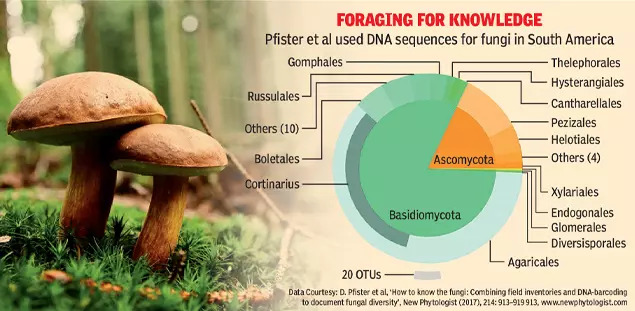
Donald H.
Pfister is professor of systematic botany and curator emeritus of the Farlow Library and Herbarium at Harvard University.
Speaking to Srijana Mitra Das at Times Evoke, he discusses the evolution and importance of the rich world of fungal flora:What is the core of your research?I work on fungi and a particular group in the class called Ascomycota.
Im interested in the identities of fungi, who is related to whom, what their biology is and how we can use that knowledge.
Earlier, we had only morphology or the study of structures.
With the advent of molecular phylogenetics, we could expand the field.
Im very interested in Pezizomycetes which include edible fungi like morels, tubers, truffles, etc.
Our lab also studies fungi that trap nematodes or worms, powdery mildew or widespread plant parasites which are not particularly well-studied, insects, etc.'; var randomNumber = Math.random(); var isIndia = (window.geoinfo -- window.geoinfo.CountryCode === 'IN') -- (window.location.href.indexOf('outsideindia') === -1 ); //console.log(isIndia -- randomNumber Congratulations!You have successfully cast your voteLogin to view resultWhy is it important to study fungi?Given their relevance, fungi are actually very under-studied.
The number of described species may be 1,50,000 but scientific estimates based on the diversity known in other organisms like plants, animals and microbes actually place that number from between one and a half million to seven million species.
This rich world is quite poorly understood.
Yet, fungi interact with other organisms in important ways.
Their relationships with roots are very beneficial as they pick up and move materials to plants which need these to grow.
All forests depend on fungi in an underground mycorrhizal network that maintains healthy plants.
Fungi can also pose threats many plant diseases are caused by these.
A banana disease linked to fungi is extremely serious.
Coffee can be infected by a fungus which limits its production and the areas it can be grown in.
Chocolate, wheat and other crops are also vulnerable.
I havent even mentioned the human diseases linked to fungi but these are only some reasons we need to study them.
There couldnt be a more pressing time either as all fungi are now being affected by climate change as this happens, species that may have been non-detrimental could be triggered to harmful actions now.NATURES RECYCLER: Trichaptum biforme can decompose hardwood.
Picture source: iStockHow are fungi distributed globally?Many are quite specific in their associations as one moves from biome to biome or from a broad-leaf forest to a coniferous wood, youll find many different kinds.
Within those biomes too, there are microhabitats a biome gets divided into sub-habitats, depending on nutrient availability, other organisms presence, etc.
So, in terms of diversity, we find both broad patterns and narrow niches in which some fungi exist.UNUSUAL BLOOMS: Mushrooms, some being edible, hold the spores of fungi.
Picture source: iStockHow does habitat loss impact fungi?Ive researched temperate forests in South America, especially Chile and Argentina.
With farming, forestry and introducing species for plantations, habitats have been tremendously altered here.
These forests held fascinating fungi though.
An example is cyttaria whose nearest relatives are in Australia and New Zealand.
This fungi is linked to Earths incredible history itself as continents were formed and separated, some of these plants and fungi moved to other areas.
As this hadnt been studied much, we didnt know the full extent of such connections.
Now, with habitat loss, were at the edge of studying these areas and species and making these discoveries.
Interestingly, in 1906, Roland Thaxter, a Harvard mycologist, travelled to the temperate forests of Chile.
He wrote a diary of his findings and collections these specimens then returned to Harvard.
When I read the diary later, I found the specimens unique.
This stimulated our ark of going back to the same forests.
In 2010, we found many of the same fungi.
But we could also see the forests had changed tremendously over time as they were cut, burned, grazed and reforested, the trees used to reforest were not the original ones.
There were now pines brought in from North America, eucalyptus from Australia, etc.
Such habitat change is crucial, particularly for the habitat niches within biomes.
Also, partly because of climate change and the pressures on forests, Chile is seeing many more forest fires.
These are also changing habitats we dont even know how effective fungi will be in regeneration.What is the most surprising fungi you have seen so far?Each fungus carries its own story.
Somebody had to first find and collect it, then study and name it and others also researched it later, gradually expanding our range of knowledge.
I find that process of history and documentation fascinating.
In my own work, there was a fungus described from Bermuda in the 1920s, associated with a Bermuda feeder, a unique local species.
An introduced insect attacked the feeder which significantly declined it was assumed the fungus also perished.
But through our molecular studies, we found that lineage was present in the eastern part of the United States.
That discovery was special it felt like bringing an assumed-to-be-extinct being back into the world.

 20
20







